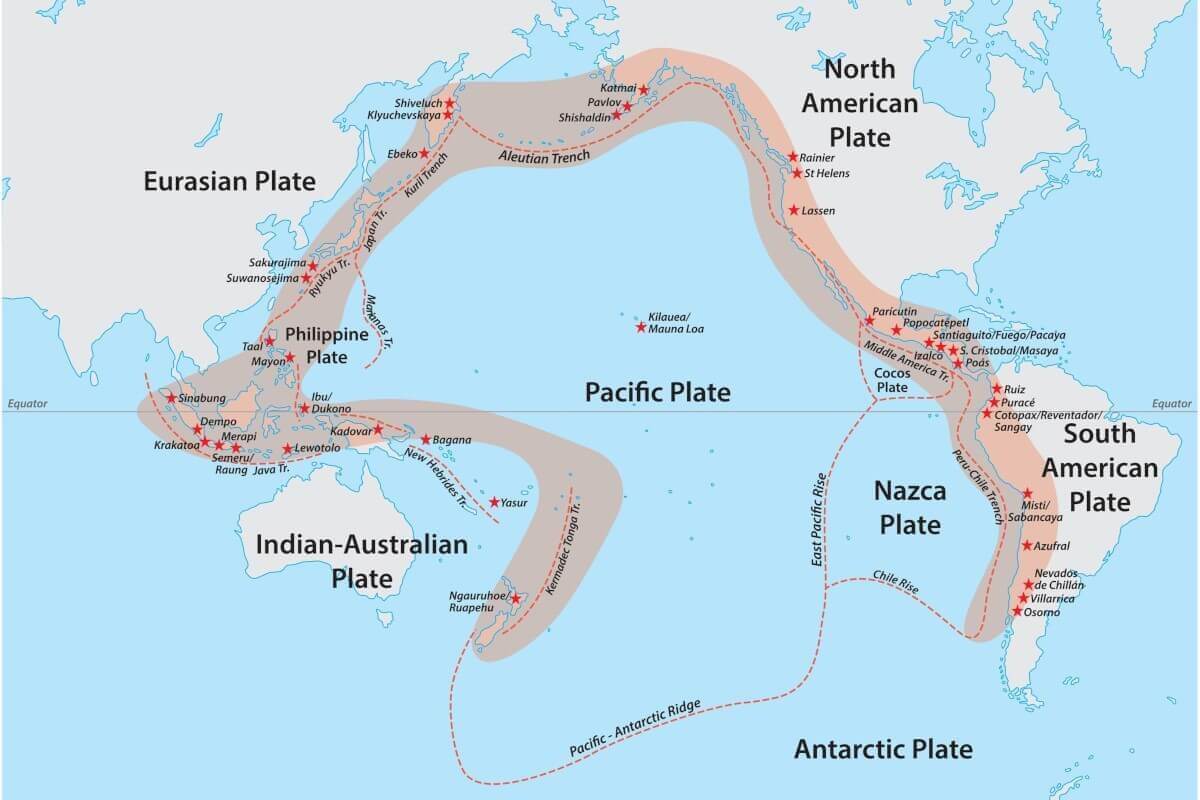
Ninety per cent of all earthquakes and 75 per cent of the world’s active volcanoes are concentrated along a 40,000 km line called the Ring of Fire.
By
Also known as the Circum-Pacific Belt, the Ring of Fire traces the boundaries of several tectonic plates – cracked segments of the lithosphere which form the earth’s outer shell. It almost fully encircles the Pacific Ocean in a horseshoe-shaped loop that begins at New Zealand and ends at the southern tip of South America.
As tectonic plates move, which they do constantly at a rate of between 3–5 cm a year, they collide, pull away or scrape against each other. This movement results in the violent volcanic and seismic activity that characterises the Ring of Fire. It’s best visualised by a map created by cartographer John Nelson which shows every earthquake with a magnitude of 4 or higher that occurred between 1898 and 2003, each one represented by a dot that is brighter or darker depending on its size.

The cause of so much violent activity is the near-continuous series of subduction zones (where convergent plates collide and one is forced below the other) that surround the Pacific Plate beneath the ocean floor. In these areas, the rock melts and becomes magma, often resulting in a volcanic eruption. In other areas, these subduction zones create deep chasms in the seabed, and many of the deepest oceanic trenches, including the Mariana Trench, can be found here.
The main exception to this series of convergent plates is at the continental border between the Pacific and North American Plates, an area known as the San Andreas fault. This is a transform boundary, where the plates grind sideways against each other, creating friction that results in earthquakes.
A ‘great volcanic circle which girdles the pacific’ was first written about in the early 19th century and its path through continents and island chains is described in detail in the July 1878 edition of Scientific American. In these last 220 years alone the region has been responsible for several catastrophic natural disasters, such as the 1815 Mount Tambora volcanic eruption, the largest volcanic eruption in modern history, which produced enough ash to lower global temperatures, causing extreme weather and failed harvests. Most of the world’s strongest earthquakes take place here, including the strongest recorded earthquake in Valdivia, Chile, in 1960, and the undersea earthquake that triggered the Indian Ocean Tsunami in December 2004.



